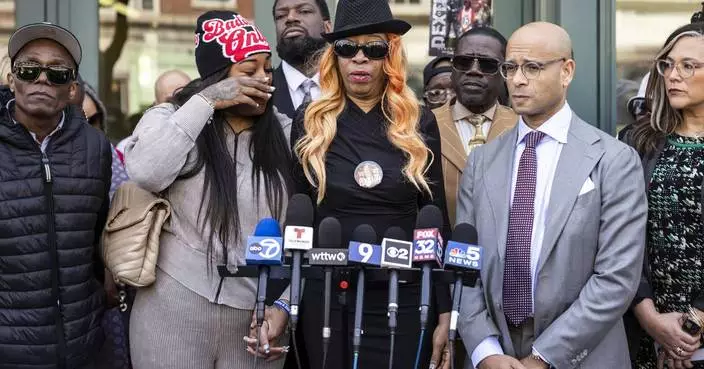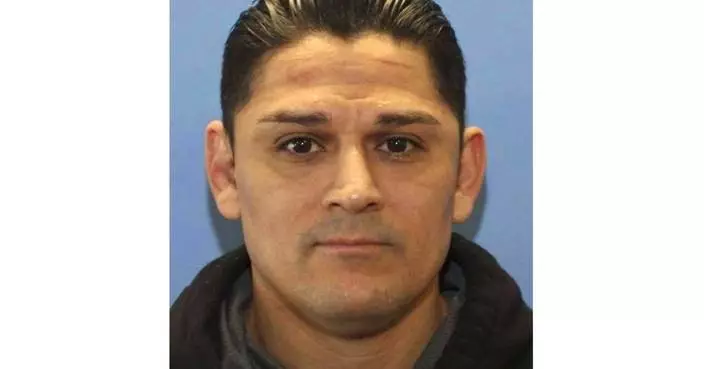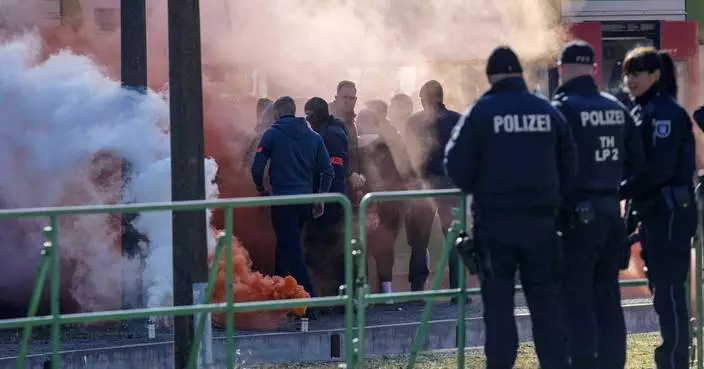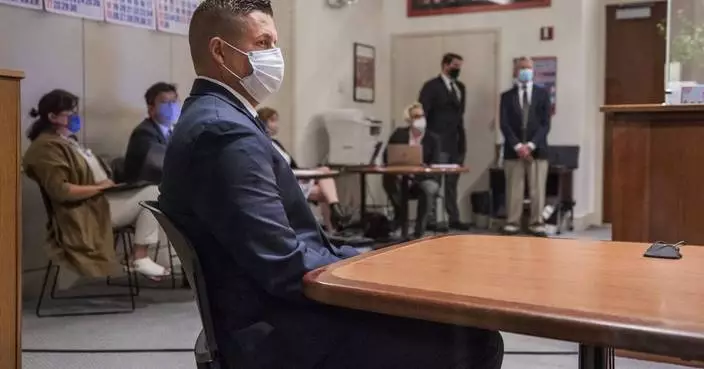A human rights lawyer said the interrogation methods were torture and violated police policies as well as several laws.
Indonesian police have acknowledged officers terrorised a Papuan man with a live snake after a video of the incident circulated online.
Police in Indonesia’s easternmost Papua region apologised but also attempted to justify the officers’ actions by saying the snake was not venomous and that they had not resorted to beating the man, who was suspected of theft.
Human rights lawyer Veronica Koman said the interrogation methods were torture and violated police policies as well as several laws.
She said it was only the latest of several reports of police and military using snakes to terrorise Papuan detainees and symptomatic of a culture of racism against indigenous Papuans.
Sam Lokon, a member of the West Papua National Committee, which advocates for independence from Indonesia, was put in a cell with a snake and also beaten after being arrested in January, Ms Koman said.
Police indicated the incident with the alleged thief happened recently, during a crackdown on petty crime in Jayawijaya district.
The spread of the video, which shows the man screaming in fear and his interrogator laughing, had forced police into a “very rare” apology, Ms Koman said, while also criticising the attempt to provide a justification.
The one minute and 20 second video shows the dark brown snake, at least two metres long, wrapped around the handcuffed suspect’s neck and waist and an officer pushing its head into the man’s face as he becomes increasingly hysterical.
Officers appear to be asking how many times he had stolen mobile phones.
Jayawijaya police chief Tonny Ananda Swadaya said in a statement the officers had been disciplined by being given ethics training and moved to other locations.
Papua province’s police spokesman said the officers involved are being questioned by an internal affairs division of the national police.
TOLEDO, Ohio (AP) — An Ohio man who was handcuffed and left facedown on the floor of a social club last week died in police custody, and the officers involved have been placed on paid administrative leave.
Police body-camera footage released Wednesday shows a Canton police officer responding to a report of a crash and finding Frank Tyson, a 53-year-old East Canton resident, by the bar in a nearby American Veterans, or AMVETS, post.
The crash at about 8 p.m. on April 18 had severed a utility pole. Officer Beau Schoenegge's body-camera footage shows that after a passing motorist directed police to the bar, a woman opened the door and said: "Please get him out of here, now.”
Police grabbed Tyson, and he resisted being handcuffed and said repeatedly, “They’re trying to kill me” and “Call the sheriff,” as he was taken to the floor.
They restrained him — including with a knee on his back — and he immediately told officers he could not breathe. A recent Associated Press investigation found those words — “I can't breathe” — had been disregarded in other cases of deaths in police custody.
Officers told Tyson he was fine, to calm down and to stop fighting as he was facedown with his legs crossed on the carpeted floor. Police were joking with bystanders and leafing through Tyson's wallet before realizing he was in a medical crisis.
Five minutes after the body-camera footage recorded Tyson saying "I can’t breathe,” one officer asked another if Tyson had calmed down. The other replied, “He might be out.”
Tyson telling officers he was unable to breathe echoes the events preceding the death of George Floyd at the hands of Minneapolis police in 2020. Tyson was Black, according to the coroner’s office. Both Canton Police Department traffic bureau officers who were placed on leave, Schoenegge and Camden Burch, are white, according to the police department.
Tyson did not move when an officer told him to stand and tried to roll him over. They shook him and checked for a pulse.
Minutes later, an officer said medics needed to “step it up” because Tyson was not responding and the officer was unsure if he could feel a pulse. Officers began CPR.
The Canton police report about Tyson’s death that was issued Friday said that “shortly after securing him,” officers “recognized that Tyson had become unresponsive” and that CPR was performed. Doses of Narcan were also administered before medics arrived. Tyson was pronounced dead at a hospital less than an hour later.
Chief investigator Harry Campbell with the Stark County Coroner’s Office said Thursday an autopsy was conducted earlier in the week and Tyson’s remains were released to a funeral home.
His niece, Jasmine Tyson, called the video “nonsense” in an interview with WEWS-TV in Cleveland. “It just seemed like forever that they finally checked him,” Jasmine Tyson said.
Frank Tyson was released from state prison on April 6 after serving 24 years on a kidnapping and theft case and was almost immediately declared a post-release control supervision violator for failing to report to a parole officer, according to the Ohio Department of Rehabilitation and Correction.
A Tyson family member reached by phone Thursday declined immediate comment.
The Ohio Attorney General's Bureau of Criminal Investigation said in a statement Thursday that its probe will not determine if force was justified and that the prosecuting attorney or a grand jury will decide if charges related to the use of force are warranted.
Canton Mayor William V. Sherer II said he expressed his condolences to Frank Tyson's family in person.
“As we make it through this challenging time, my goal is to be as transparent with the community as possible,” Sherer said in a statement released Wednesday.
The U.S. Department of Justice has warned police officers since the mid-1990s to roll suspects off their stomachs as soon as they are handcuffed because of the danger of positional asphyxia.
Many policing experts agree that someone can stop breathing if pinned on their chest for too long or with too much weight because it can compress the lungs and put stress on the heart. But when done properly, putting someone on their stomach is not inherently life-threatening.
An investigation led by The Associated Press published in March found more than 1,000 people died over a decade after police subdued them through means not intended to be lethal, including prone restraint.
Scolforo reported from Harrisburg, Pennsylvania.
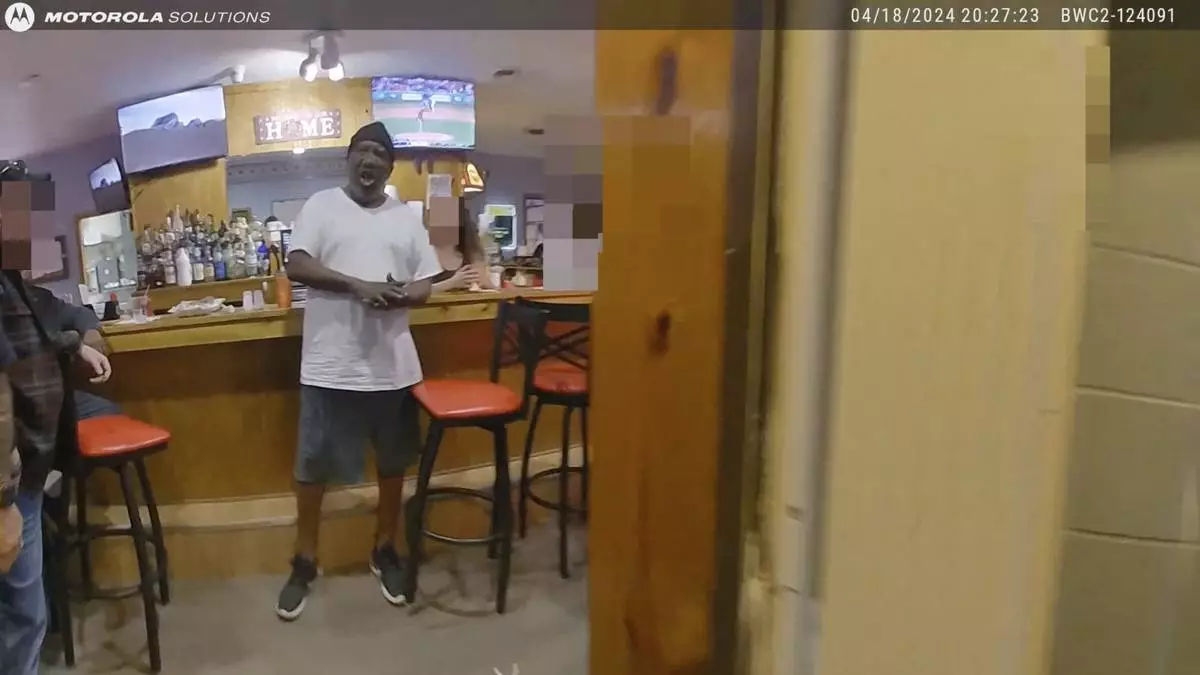
This image, taken from Canton Police body camera video, shows 53-year-old Frank E. Tyson on Thursday, April 18, 2024, in Canton, Ohio. Police say Tyson, a resident of East Canton, was arrested in a tavern after he crashed his car into a nearby utility pole. He died after being handcuffed by police. (Canton Police Department via AP)





